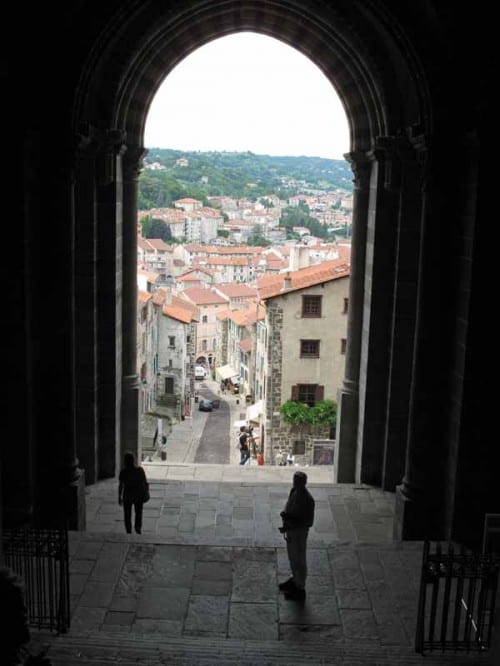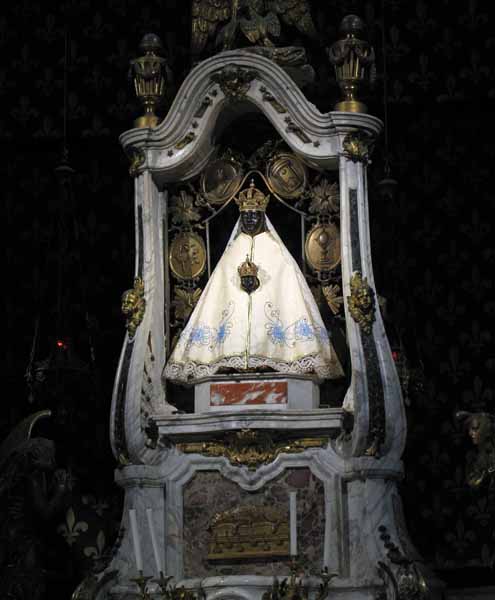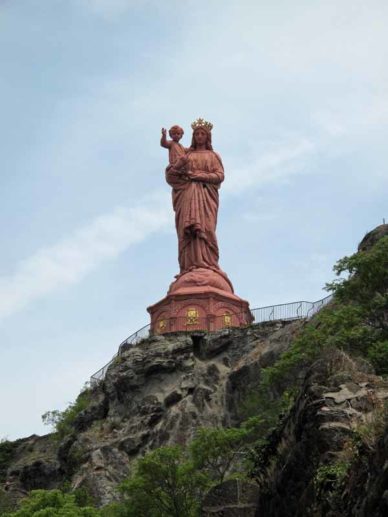Monday, 4 July 2011

Having completed the necessary loop around France by reaching le Puy, we were in a position to indulge ourselves for a day before setting off on the second half of our expedition, which would involve a train trip to St-Amand-Montrond in the Cher.
We slept in until after eight, enjoying the sounds of the pilgrims rising and leaving while we lay comfortably in our sleeping bags.
After a token bowl of muesli we went up to the town by the main road (Boulevard Carnot), passing the remains of the old defensive wall at the Rue Pannessac.
At the Office of Tourism we found out that we could use the internet for free there, but it was already occupied so we were directed to a cybercafé further on.
Thus we came to explore a charming residential area of small cottages near the Rue Chèvrerie, a sort of urban village within the town.
The cybercafé was less salubrious, with the usual dingy brown interior, and it cost €4 an hour, so we did not stay. Instead we walked on to the railway station and booked our tickets for tomorrow.

Trains to the north take one of two routes – either through Clermont-Ferrand or, more slowly, down the gorge to St-Étienne and Lyon. Of course we preferred the latter as we were keen to retrace our steps in reverse from the comfort of a carriage, but I had to explain the reason to the clerk, who was keen to put us on the quicker route. She warned us that it would take more than eight hours via the gorge, but we did not care. The price was €44.50 each.
Back at the Office of Tourism, the internet was now available and we occupied it for much longer than the permitted ten minutes, with the blessing of the excellent ladies at the counter, as there were no other people waiting. Then we bought lunch supplies at the Spar supermarket next door and retired to a nearby bar for coffee and croissants in the sunshine.
Our business being at an end for the day, it was time to do what we had failed to do on both our previous visits to le Puy, namely visit the cathedral. Approaching from the west up the Rue des Tables, which became a staircase at the last, we entered the gloomy space, first turning to take in the view over the town and the countryside beyond.

It was a position of great symbolic power and we were not surprised to learn that it had been occupied since the earliest times by sacred buildings.
The oldest one known was a Celtic shrine incorporating a dolmen – a large flat slab of rock supported by two other massive stones and used for burials. After that there was a Roman temple, in which the dolmen was retained, no doubt because of the veneration in which it was held by the local people.
When Christianity arrived in the fifth century, the temple was rebuilt as a church, but once again the dolmen remained – the new religion having not fully displaced the old – and became known as the “Throne of Mary”. It had such a reputation for curative power that sick people came in droves to lie on it.
Eventually, in about the eleventh century, the flat stone was lifted off and built into the pavement, where it can still be seen. The cathedral was extended several times to cope with the increasing flood of pilgrims. The Black Virgin is a reminder of the cult of the worship of Mary that was widespread in the middle ages.

There was an earlier icon of the Virgin at le Puy, but the first Black Virgin appeared about the year 1000.
It seems likely that it was carved by an Arabic or African sculptor and may even have been a statue of the goddess Isis before being pressed into service as an image of Mary.
On the other hand, it may simply have become dark from centuries of candle soot. During the French Revolution, in 1794, this first Black Virgin was publicly burned, so the one we see today is relatively modern.
She has a certain doll-like charm, with her startlingly white tent-shaped robe of satin, from the middle of which protrudes another, smaller black head – the baby Jesus.

We visited various side chapels and then the cloisters, which were a great disappointment to a gardener like me.
The central beds were choked with a few scruffy perennials, whereas I had expected a lovingly tended display of medicinal herbs and flowers.

The surrounding arcades were pleasant enough, although rather hectically striped in Moorish fashion. The unbelievably massive statue of the Virgin hovered high above, just beyond the walls.
In the afternoon we lay about in the camping ground, emerging as evening fell in search of dinner.
This time we had a two-course menu for €9.20, which started with large salads and finished with satisfying plates of pork and chicken. As usual we cleaned up two or three baskets of bread and all the wine.
Previous day: Vorey-sur-Arzon to le Puy-en-Velay